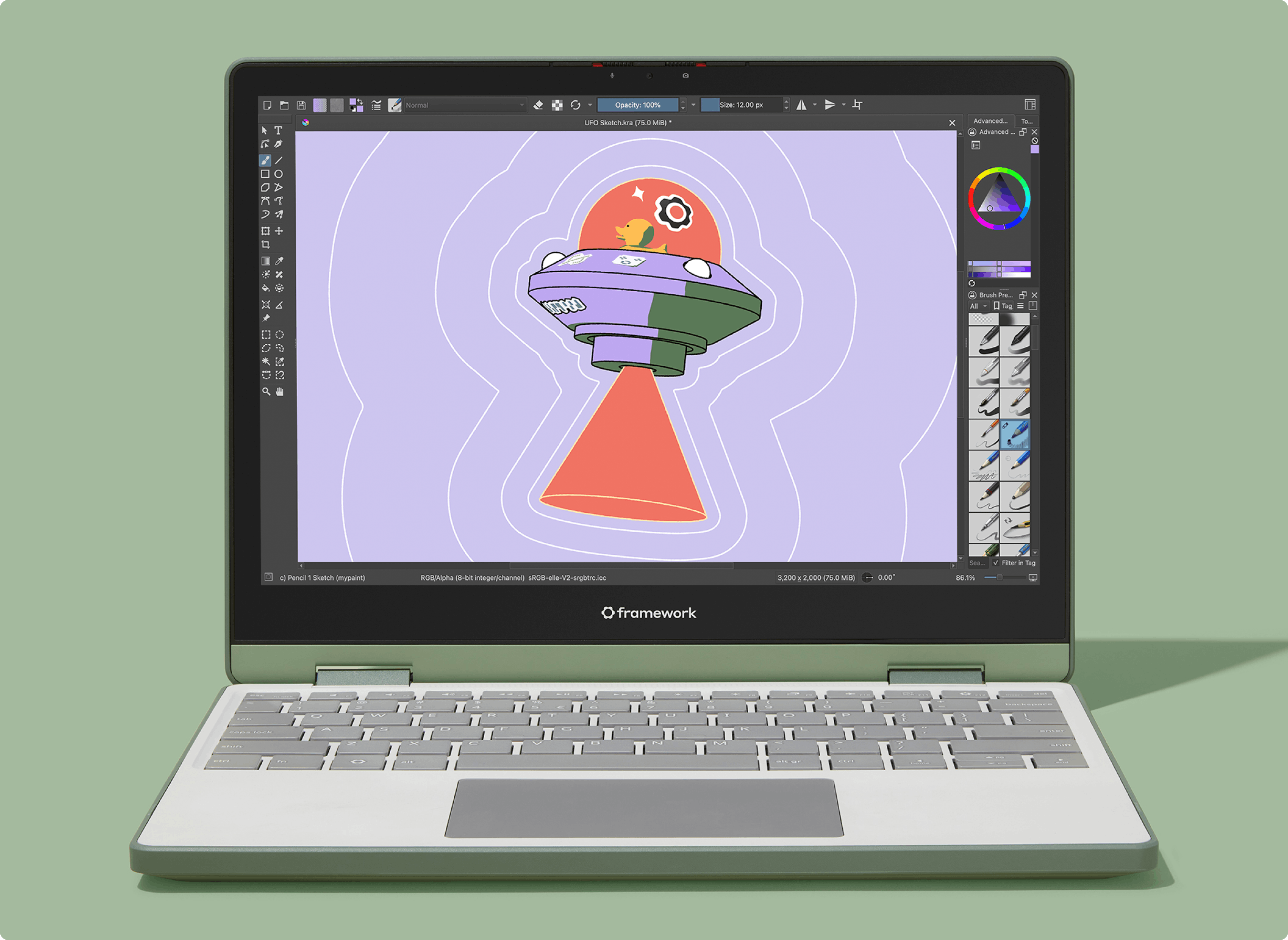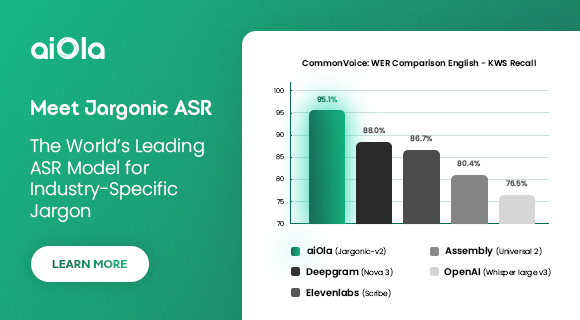Introduction
During the late 1980s, Namco set out to create the world’s largest arcade game. The result was Galaxian3: Project Dragoon; a 28 player behemoth that debuted in April 1990 at the International Garden and Greenery Exposition in Osaka, Japan. Codenamed GH-28, it featured real-time, flat-shaded 3D graphics, powered by hardware derived from the System 21 platform first used by 1988’s Winning Run.
In 1991, a 16 player version (‘GM-16’) was released, introducing pre-rendered CGI backgrounds stored on LaserDisc and more performant 3D hardware. This version was sold to several arcades and establishments in the Asia region.
In 1992, the experience was further condensed into a room-sized, six player version: “Galaxian3 Theatre 6″ (‘GT-6’). This was produced in greater numbers and saw a worldwide release.


Source: The Arcade Flyer Archive
A sequel to Project Dragoon, “Attack of the Zolgear” was released in 1994 and offered as a conversion kit in the form of replacement ROMs and LaserDiscs.
Tragically, in the early 2000s, many Galaxian3 installations were converted to Tsunami Visual Technologies’ Air Raid, a PC-based game, with most of the Galaxian3 electronics discarded in the process.
As of 2025, there are four known remaining instances of GT-6; one in Europe, two in Japan and one in the USA. The latter resides at the Fun World arcade in Nashua, New Hampshire. Unfortunately the game has been out of service for over a decade, its exact condition unknown.
Contact was established with the owner to allow an effort to repair the game and to preserve the data contained within; specifically the ROM data and the LaserDiscs.
Trip 1: March 2024
A team assembled at Fun World to assess the game – myself Phil Bennett, Alex Cmaylo, Bill DeLeo and Scott Gurney. Alex and I had flown from California and we had two days to inspect the machine during the week while the arcade was closed.
The machine is situated at the top of the third floor and was fenced off and covered by a tarp. After deeming the game electrically safe, we powered it on. Surprisingly, it appeared to work but with notable issues:
- Only players 1 and 2 worked
- Sound was missing from several speakers
- The blue output of the left-side projector was very dim and blurry
Hardware Overview
Let’s examine what’s inside the machine.
Video Displays
There is a large projection area on which the game is displayed by two Sony VPH-1043QJ CRT projectors mounted above the seating area. Located in the cabinets beneath the projection screens are speakers (missing on this particular machine) and flash lamps which trigger whenever the players take damage.

Player Controls


Each player has a two-axis analog control with digital buttons. A speaker mounted inside the control plays sound effects and a vibration motor provides force-feedback. Additionally, an array of LEDs on top of the control flash when the player is hit.
In front of the player seats, there are three Control Boxes: left, center and right.
Center Control Box
The central box contains most of the PCBs and two power supply units:


Master PCB

The Master PCB handles the main logic of the game and features a 24MHz 68020. The program is stored on 2MB of ROM but is primarily executed out of 512KB of SRAM. There is a 68681 DUART and Namco C139 serial communications interface but neither are used by this version of the game. This PCB was also used by the DS-5000 Mitsubishi/Namco driving simulator.
Slave PCB

Physically identical to the Master PCB (though with different ROMs and jumper settings), the Slave PCB drives two sets of video hardware, one per side. Each set consists of a DSP, PGN and OBJ PCB:
DSP PCB

The DSP PCB has five TMS320C25s that handle processing of the 3D vertex data; transformation, lighting, clipping and projection. This PCB is also used by later-generation System 21 games such as Star Blade, Solvalou and Air Combat.
PGN PCB

The Polygon PCB rasterizes flat-shaded polygons from the vertex data produced by the DSP PCB. The pixel data is fed into the OBJ PCB. This PCB is also used by other late-generation System 21 games.
OBJ PCB

The Object PCB generates 2D objects/sprites. As there is no tilemap hardware, everything non-3D is sprite-based. The sprites are combined with the 3D layer before palette lookup and digital to analog conversion. This PCB is unique to Galaxian3 but very similar to the OBJ PCB of other System 21 games.
V-MIX PCB
 Photo credit: andys-arcade
Photo credit: andys-arcadeThe video mixer PCB handles genlock, combining the LaserDisc video output with that of the OBJ PCB. It has four RGB video outputs, though only two are used by GT-6. It also appears to have four composite outputs.
C-RAM PCB
 Photo credit: andys-arcade
Photo credit: andys-arcadeThe C-RAM PCB is used for communication between the Master and Slave PCBs, featuring 32KB of SRAM and two C195 memory arbitration ASICs.
RSO PCB

Also known as the ‘network PCB’, the RSO PCB has six 68681 DUARTs and nine C139 serial interfaces, most of which are unused by GT-6. One 68681 is used to communicate with the LaserDisc players via an RS-232 interface. One C139 interfaces with the Sound PCB while three are used to communicate with the Personal PCBs, which handle player I/O.
Sound PCB

The sound PCB produces sound effects and speech. A 12MHz 68000 controls five C140 24-channel PCM sound ICs. Two are dedicated to sound effects and one is dedicated to speech, leaving three unused by GT-6.
Left Control Box
There are two PSUs and three identical PCBs:
PSN PCB

A Personal PCB handles I/O for two players. It has an 8MHz 68000 and numerous peripherals. It produces four channels of PCM sound, two per player. A C139 communicates with the RSO over an RS-422 link.
Right Control Box
LaserDisc Players

There are two industrial-grade Pioneer LD-V8000 LaserDisc players. The LaserDiscs are CAV-encoded, with the Japanese version on side A and English on side B. There are both analog and digital audio tracks present. The two discs are identical – the left-side video is on the first half of the disc and the right-side on the second.
Audio Amplifiers

Two Yamaha AX-570 stereo amplifiers produce four channels of sound: rear and front stereo.
Diagnosis
None of the players 3-6 inputs functioned within the game or input test, the latter showing zeroes across all analog inputs. We suspected an issue with two of the PSN PCBs. The PSN 5V supply was measured as 4.95V at PCB level, with no ripple or significant noise.
The PSN PCB has an undocumented test switch which, when enabled, will trigger sounds, Hit LED flashes and motor vibration when the player’s buttons, service and coin switches are pressed. All three PCBs behaved identically in this mode, proving that each CPU was running and able to read inputs correctly.
The fault followed the PCBs: installing the ‘bad’ PCBs in place of the working PCB prevented players 1 and 2 inputs from working, while installing the working PCB in any position resulted in functioning inputs. This also ruled out any cabling issues.
Upon powering-on the machine, the bad PCBs showed a flashing LED pattern:
The number of flashes was not consistent between power-cycles and sometimes there were no flashes at all. The manual explains the significance of many of the LEDs found on the other PCBs but does not include these.
With limited test equipment and dwindling time, diagnosing the fault seemed beyond the scope of this trip. It was decided that I would take the three PSN PCBs and the RSO PCB back with me to California, where I would bench test them and hopefully identify then repair any faults. I also took the Sound PCB for the purpose of documentation. I would aim to learn as much as humanly possible regarding the operation of the machine in order to be better prepared for our next visit.
Part of the remaining time was spent examining the left-side projector. It contains three separate CRTs with a liquid coolant chamber coupled to the face of each tube and three lens assemblies. Over time, crystal deposits form in the coolant chamber as a result of chemical reaction between the glycol coolant and the aluminium housing. This is informally known as “CRT fungus” and results in an obscured, blurry image. This appeared to be part of the problem with the blue channel:



The fungus can be removed and as it so happened, we knew somebody who had performed the procedure on another Sony projector with excellent results. Next time, we would enlist him to the cause!
Preservation
To digitize the LaserDiscs, a Domesday Duplicator setup was assembled and tested thoroughly prior to the trip. This turns a LaserDisc player into an extremely accurate optical scanner by sampling the raw RF signal from the player’s laser. The captures produced by this method are vastly superior to those produced from capturing the conventional output of a player. A Pioneer HLD-X0 MUSE LaserDisc player, expertly calibrated by Bill, was chosen for the process. It is equipped with a red laser with a beam far narrower than that of a traditional LaserDisc player. As a result, it is able to navigate imperfections on the disc surface such as dirt, scratches and rot significantly better.


The LaserDiscs inside the players were in excellent condition, having been left mostly undisturbed over the last thirty years. The arcade had acquired extra discs but they were excessively warped and were unreadable.
We were very pleased with the captures produced by the setup:


Dropouts in the RF signal caused by surface imperfections manifest as lines of colored dots:
The Domesday Duplicator software suite supports ‘stacking’ of captures from multiple discs to minimize and potentially eliminate all dropouts (save for those present in the mastering process):
 Dropout analysis of disc 1 capture
Dropout analysis of disc 1 capture Dropout analysis of disc 2 capture
Dropout analysis of disc 2 capture Dropout analysis of discs combined
Dropout analysis of discs combinedPreserving the ROM data from the PCBs was time-consuming but straightforward, as every ROM was a socketed, standard EPROM. Where possible, we attempted to read the PALs and GALs but most had their security-fuse set, preventing data extraction.
The arcade had retained the ROMs and LaserDiscs for Project Dragoon when the machine was converted to Attack of the Zolgear. We preserved these also. The ROM set was an undumped, newer revision dated “MON MAR 1 22:30:10 1993” but unfortunately one of the unique master CPU program ROMs was missing:


Hardware Analysis and Further Diagnosis
To better understand the operation of the PSN PCB, I traced out a schematic covering approximately 90% of the PCB. I brute-forced the PALs that we were unable to read by conventional means (these will be uploaded to the PLD Archive in time). On the software side, Ghidra was used to analyze the 68000 program:
The first goal was to understand the function of the green and red LEDs. I discovered that the red LED denotes the assertion of the 68000’s /RESET line. After program initialization, the LED is cleared and the green LED illuminates to indicate normal program operation:
An examination of the 68000 code revealed no power-on tests nor any possibility of initialization failure that could cause the flashing LED sequence. The events capable of triggering a reset were confirmed as:
- Watchdog timeout
- Generic 68000 exception (e.g. address error, illegal instruction)
- Changing the PCB test switch from ON to OFF
- Reset serial packet sent by the RSO
After cobbling together a power harness, I powered up each PSN PCB on my test bench. No flashing LED pattern was observed after numerous resets with the 5V supply adjusted between 4.65V and 5.1V.
The PSN PCB only transmits serial data upon receipt of a valid packet from the RSO. There are three types of packet:
- RSO->PSN: Update outputs (lamps, motors and sound)
- PSN->RSO: Send button state and analog controller values to RSO
- Reset: Restart the PSN program
An 8-bit checksum is sent with each packet. Packets failing a checksum are dropped without consequence. An examination of the RSO code revealed that a Reset packet is sent to each PSN once during boot. There is no error handling that would cause multiple reset packets to be sent and trigger the LED sequence observed on-site. The RSO sends RSO->PSN followed by PSN->RSO packets continuously, even if the PSN board is not connected.
My next step was to verify that the serial link of each PSN was functioning correctly. The link is 9-bits (MSB first) at 1Mbps. The ninth bit is not a parity bit but is instead used to trigger an interrupt on the receiving C139 to denote the end of a packet. I chose an Arduino Uno with an RS-422<->TTL adapter to interface with the PSN PCBs. I wrote code to transmit and receive data to and from each PSN, verifying the packet checksum on the Arduino side. No faults were found by this process.
I used this setup to verify that all I/O was functioning correctly:
The PSN PCBs were originally designed for GH-28/GM-16 and as a result there are several features unused by GT-6. Of note is the video hardware that drove small displays in the player controls, showing the player’s rank and shield status:

As for GT-6, If one was to add character ROMs and connect a 15KHz display to the video outputs, you would see a debug screen that shows the state of the input and other statistics:
Using Easy68k, I created a test program to verify the work RAM and C139 buffer RAM on each PSN. All PCBs passed the tests.
To rule out any possible issues with the RSO PCB and to recreate the communication link of the machine, I wrote a pair of 68000 programs that would send random data accompanied by a CRC back and forth between the RSO and PSN, halting on a CRC failure. I also included a RAM test for the RSO work RAM and C139 buffer RAM. No faults were detected and the signal integrity of the RS-422 link appeared fine on an oscilloscope. At this point, I was convinced the faults lay elsewhere.
Trip 2: March 2025
It was time to return to Fun World to attempt another repair. This year’s team added Ford Seidel and Thomas Daede, the latter of whom had experience of servicing CRT projectors. Our main objectives were to:
- Fix the player input issues
- Service the left-side projector (and the right-side, time-permitting)
- Locate the missing ROM for the undumped revision of Project Dragoon
This year we were much better informed about the operation of the game and would also arrive better equipped. Ford very graciously agreed to fly with an HP 1660C logic analyzer in his carry-on luggage and arranged to borrow a digital storage oscilloscope from a friend in Boston (thank you Gally!). As a precaution, I purchased replacement components for the serial sections of the RSO and PSN PCBs: optocouplers and three sets of SN75157/SN75158 RS-422 receivers/transmitters.
With the PSN PCBs re-installed and the game powered-on, the previous behaviour was observed; the two ‘bad’ PCBs began flashing their LEDs. On a subsequent power-on however, one of the ‘bad’ PCBs suddenly began working, allowing players 5 and 6 to start a game!
During my research, I had found photos of the inside of another machine showing leads connecting the GND test points of each PSN PCB to the metal frame of the left control box. These were not present on this machine. Bill fabricated a set of ground leads and we installed them. We never again saw the dreaded flashing LED sequence. I hadn’t noted any grounding or noise issues during early probing but I was happy to accept this victory and move on. We later verified that the AC input was properly grounded.
The third PSN PCB failed to work. The oscilloscope was set up and probing commenced…
The CPU was running normally and was servicing interrupts. However, no C139 receive interrupts were being generated. Serial data was arriving over the RSO link but probing the SN75157 line receiver showed sensible input voltages but an output plagued with errant spikes:
 Note the spikes on the pink signal (channel 3)
Note the spikes on the pink signal (channel 3)Why this IC was suddenly presenting problems despite extensive testing I did not know. The decision was made to replace it and I was glad I’d had the foresight to bring replacements! Bill desoldered the IC and installed a socket. With the new IC fitted, we eagerly applied power and noted the synchronized LED pattern across all PCBs, indicating receipt of a reset packet from the RSO:
In test mode all six player inputs were now working!
The relief was immense. Having lain on the floor for several hours, I took a much deserved walk around the arcade to stretch out and discover some exciting games:
The day was met with further good news: with the aid of the arcade’s technician, Alex found and dumped the missing EPROM from Project Dragoon!
Meanwhile, Thomas, Bill and Scott were busy servicing the left-side projector:
The blue CRT had severe burn-in:
The coolant was removed from each chamber using a syringe and CLR was used to clean the fogged glass. We would let it sit overnight and perform the coolant change the following day.
Progress at the end of the first day was extremely promising and I hoped for a more relaxed following day.
The next morning, while discussing CRT projectors over breakfast, Alex searched eBay for possible replacements. Miraculously, an untested Sony VPH-1040Q was listed for auction two and half hours away in Connecticut. According to curtpalme.com, this uses the same tubes as the original projector. We could either swap the tubes (assuming they were in better condition) or mount the new projector in place of the old one. Alex contacted the seller and convinced him to end the auction early, offering to pay double the current asking price of $25. Ford and Alex set off on an exciting road trip to pick it up, while the rest of us returned to Fun World.
I spent the day collecting measurements from the running machine for the purpose of documentation (e.g. clock frequencies and interrupt signals) while the others performed the projector coolant change and calibration. A friend, Jen, dropped in to help and observe, having driven from Vermont.
At one point I accidentally knocked off a jumper on the RSO board and we spent twenty painful minutes wondering why the game stopped responding to inputs and would not display anything other than ‘INSERT COINS’. Said jumper determined the VBLANK interrupt source for the RSO PCB and without it, the game was effectively paused. To avoid any further stress, I ceased probing.
Late in the afternoon, Alex and Ford returned with the projector:
It appeared to be working and the tubes were bright and burn-free. The new projector was almost identical to the old unit, allowing for a drop-in replacement. Once installed in the game, the results were magnificent:

Alex and Ford replaced numerous burned-out fluorescent fittings and bulbs around the machine. Bill fixed several issues with the speaker wiring and fitted replacement speakers, bringing both front and rear channels back to life.
The vacuum-formed sign on the outside of the machine is in great condition but several plastic mounts inside had snapped over time. Thomas quickly designed and produced replacement mounts that could be bolted to the machine through existing holes. These had been printed on Bill’s 3D printer overnight and worked well:


At this point, it was time to enjoy some credits on the newly working game!
Problems
Unfortunately there were issues with the newly-working machine. The day after its installation, as the arcade was about to close, the new projector began to intermittently shut down. The decision was made to remove it and swap the tubes into the old projector. Though time consuming, Thomas and Bill got the job done.
The next day, after the machine was in operation for about three hours, video sync issues appeared on the left-side:
The left-side LaserDisc player was suspected to be at fault. We had learned during our previous visit that the arcade had four spare LD-V8000 units, though none worked well enough to be swapped in. Suspecting the DEGE PCB, Bill and Scott transplanted a working PCB from the unit that showed the most promise.

Alas, after another day of operation the problem re-appeared. Further diagnosis is needed and it is possible that there is an issue with the V-MIX PCB.
Future Work
Despite the issues, overall we are immensely pleased with what we achieved during our trips and I am very proud to have been part of the effort. The current fault will hopefully be fixed in time but please bear in mind that this is a time-intensive volunteer project and patience is a virtue!
We would recommend holding off on any road trips to play the game until it is more stable but if you do make the trip, plan to soon after the arcade opens while the machine is in a good mood! (Note that the operation of the machine is at the discretion of the arcade owner and they may choose to put it out of service until the fault is fixed).
There are a number of fixes and improvements that could be made:
- Re-install the original speakers or find modern equivalents
- Service the power supplies
- Replace the non-working player 5 vibration motor
- Fine-tune the projectors
- Perform a coolant swap on the right-side projector
- Fix the vertical gap between the two displays
- Investigate a solid-state replacement for the LaserDisc players
Hopefully the game will continue to run well enough so that it can be enjoyed by all!

























 English (US) ·
English (US) ·